Top 10 Hydroponic Herbs to Try
Imagine being able to easily pick fresh spices every time you cook without having to spend a lot of time growing and caring for them. That's exactly what hydroponic herbs offer you! With the increasing demand for fresh spices in modern cooking, this method of cultivating them without soil and only with water has become the new trend in growing herbs indoors. This technique not only ensures that we have easy access to fresh, flavorful herbs all year round, but it is also more efficient and environmentally friendly than traditional soil growing, saving water and space. From the perspective of access and benefits, the advantages of hydroponic growing are impossible to ignore.
In what follows, we'll take an in-depth look at the top 10 herbs best suited for hydroponic growing, with a focus on those species that are a good match for Western culinary tastes. To fulfill your eagerness to use fresh spices in your cooking, read on for more great content on hydroponic herbs!
1. Basil: Likes Rich Nutrients
Difficulty level: Beginner friendly
Plant type: Herb
Light needs: 10 to 12 hours
pH level: 5.5 to 6.5
EC level: 1.5 to 2.5
Temperature level: 70 to 80 degrees Fahrenheit
Lighting time: 10 hours per day
Growth Time: 30 to 60 days
Hydroponic system: Any, but Deep Water Culture (DWC) or Nutrient Film Technique (NFT) are often preferred
With the increasing demand for fresh culinary herbs in the market, basil has emerged as a favorite choice among many. This affinity for water positions it as an ideal candidate for hydroponic systems, especially Deep Water Culture (DWC) or Nutrient Film Technique (NFT). However, it can be adapted to almost any hydroponic setup, making it a standout among hydroponic herbs.
In cuisines from Italy, India, and Southeast Asia, basil is a cherished ingredient. It's frequently used in a variety of dishes, such as Italian pesto, Thai green curry, and Indian curries. When it comes to harvesting, you can effortlessly pick the tender leaves of basil without uprooting the entire plant, promoting more vigorous growth.
One of the advantages of hydroponically grown basil is its ability to thrive year-round, irrespective of the season. This is a significant edge over traditional soil cultivation, which is typically restricted to the warmer months. With hydroponics, you can relish fresh basil at any time of the year.
Basil plants are also relatively compact, making them perfect for indoor hydroponic systems. They don't demand much space to flourish, and their vertical growth pattern ensures they maximize limited spaces.
Although native to tropical regions, basil is remarkably resilient and can endure a variety of conditions. However, it has a preference for slightly acidic pH levels and warm temperatures, so these factors need close monitoring.
In summary, basil is an excellent choice for hydroponic cultivation. With its love for water, year-round growth, and delectable flavor, it's a favorite among hydroponic gardeners. With just a bit of care and attention, you can reap a rich harvest of this aromatic herb.
2. Mint: Grows Easily in Water

Experience level: Beginner friendly
Plant type: Herb
Light needs: 10 to 12 hours
pH level: 6.0 to 7.5
EC level: 1.5 to 2.4
Temperature level: 55 to 70 degrees Fahrenheit
Lighting time: 10 hours per day
Growth Time: 60 to 90 days
Hydroponic system: Any, but Deep Water Culture (DWC) or Nutrient Film Technique (NFT) are often preferred
Mint, with its refreshing aroma and taste, is a delightful addition to any hydroponic garden. This fast-growing herb is known for its vigorous growth and adaptability, making it an excellent choice for beginners.
One of the unique aspects of mint is its ability to grow throughout the year. This means you can enjoy its fresh, invigorating flavor in your dishes or drinks no matter the season. Imagine the luxury of adding fresh mint to your summer mojitos or winter teas, all grown right in your home!
Mint plants are compact and have a vertical growth habit, making them ideal for indoor hydroponic systems where space might be limited. Despite their small size, they pack a punch when it comes to flavor and aroma.
Mint is a hardy plant that can tolerate a range of conditions. However, it does best in a slightly acidic to neutral pH and cool to moderate temperatures. Regular monitoring of these parameters will ensure your mint plants remain healthy and productive.
Mint's robust growth, year-round productivity, and refreshing flavor make it a rewarding addition to any hydroponic garden. With proper care, you'll be able to enjoy the fresh, invigorating taste of homegrown mint throughout the year.
3.Cilantro: Wants Cool Water

Difficulty level: Intermediate
Plant type: Herb
Light needs: 12 to 16 hours
pH level: 6.5 to 7.5
EC level: 1.2 to 2.0
Temperature level: 50 to 85 degrees Fahrenheit
Lighting time: 12 hours per day
Growth Time: 60 to 75 days
Hydroponic system: Any, but Deep Water Culture (DWC) or Nutrient Film Technique (NFT) are often preferred
Cilantro, also known as coriander, is a flavorful herb that's a staple in many global cuisines. Its unique, citrusy flavor is a key ingredient in dishes ranging from Mexican salsas to Indian curries.
Growing cilantro hydroponically allows you to have a fresh supply of this flavorful herb at your fingertips. While it's a bit more challenging to grow than basil or mint, the effort is well worth it for the fresh, vibrant flavor it can add to your meals.
Cilantro prefers a slightly cooler temperature than many other herbs, but it still needs plenty of light to thrive. One of the benefits of growing cilantro hydroponically is the ability to grow it year-round. No need to wait for the right season; you can enjoy fresh cilantro in your dishes whenever you want.
Cilantro plants are compact and well-suited to indoor hydroponic systems. They have a relatively short growth time, with most varieties ready to harvest in about two to two and a half months.
In conclusion, while cilantro might require a bit more attention than some other herbs, its unique flavor and versatility in the kitchen make it a rewarding choice for hydroponic cultivation. With careful monitoring and care, you can enjoy the fresh, vibrant taste of homegrown cilantro all year round.
4.Rosemary: Needs Oxygen in Water

Difficulty level: Intermediate
Plant type: Herb
Light needs: 6 to 8 hours
pH level: 6.0 to 7.0
EC level: 1.0 to 1.4
Temperature level: 65 to 75 degrees Fahrenheit
Lighting time: 6 hours per day
Growth Time: 85 to 95 days
Hydroponic system: Any, but Deep Water Culture (DWC) or Nutrient Film Technique (NFT) are often preferred
Rosemary, a fragrant herb, is a staple in Mediterranean cuisine. Its piney flavor and aroma enhance a variety of dishes, from roasts to soups. Hydroponically grown rosemary can be a bit challenging but rewarding, with the herb's fresh, aromatic leaves available year-round.
Rosemary plants are larger and bushier than many herbs, but they adapt well to indoor hydroponic systems. They have a longer growth time, typically ready for harvest in about three months.
To ensure a steady supply of rosemary, a staggered planting schedule is recommended. This way, as you harvest one batch, the next is ready to grow, providing a continuous supply of this aromatic herb.
In conclusion, rosemary, with its robust flavor and multitude of culinary uses, is a rewarding addition to any hydroponic garden. With careful monitoring and care, you can enjoy homegrown rosemary's fresh flavor throughout the year.
5. Parsley: Wants Stable pH

Difficulty level: Beginner friendly
Plant type: Herb
Light needs: 12 to 16 hours
pH level: 5.5 to 6.8
EC level: 1.1 to 1.8
Temperature level: 60 to 65 degrees Fahrenheit
Lighting time: 12 hours per day
Growth Time: 70 to 90 days
Hydroponic system: Any, but Deep Water Culture (DWC) or Nutrient Film Technique (NFT) are often preferred
Parsley, a vibrant green herb, is a common ingredient in many dishes worldwide. Its fresh, slightly bitter taste complements a variety of foods, from soups and sauces to salads and garnishes.
Growing parsley in a hydroponic system can be a rewarding experience. This herb thrives in slightly acidic to neutral pH levels and moderate temperatures, making it a suitable choice for indoor hydroponic systems.
One of the benefits of hydroponic cultivation is the ability to grow plants like parsley year-round. Parsley plants are compact and well-suited to indoor hydroponic systems. They have a relatively short growth time, with most varieties ready to harvest in about two to three months.
Parsley, with its fresh flavor and multitude of uses in the kitchen, is a rewarding addition to any hydroponic garden. With careful monitoring and care, you'll be able to enjoy the crisp, fresh flavor of homegrown parsley all year round.
6. Sage: Needs Fresh Nutrients Often

Difficulty level: Intermediate
Plant type: Herb
Light needs: 6 to 8 hours
pH level: 5.5 to 6.5
EC level: 1.8 to 2.3
Temperature level: 60 to 70 degrees Fahrenheit
Lighting time: 6 hours per day
Growth Time: 75 to 85 days
Hydroponic system: Any, but Deep Water Culture (DWC) or Nutrient Film Technique (NFT) are often preferred
Sage, with its soft, fragrant leaves, is a wonderful herb to grow in a hydroponic system. Its robust, slightly peppery flavor makes it a popular choice in many dishes, particularly in poultry and pork recipes.
Growing sage hydroponically allows you to have a fresh supply of this flavorful herb at your fingertips. While it's a bit more challenging to grow than some herbs, the effort is well worth it for the fresh, vibrant flavor it can add to your meals.
Sage prefers a slightly acidic to neutral pH and moderate temperatures, and it doesn't require as much light as some other herbs, making it a good choice for indoor hydroponic systems with limited light.
One of the advantages of hydroponic cultivation is the ability to grow plants like sage year-round. This means you can enjoy the rich, robust flavor of fresh sage in your dishes no matter the season.
Sage plants are larger and bushier than many other herbs, but they can still be grown successfully in an indoor hydroponic system. They have a longer growth time, with most varieties ready to harvest in about two and a half to three months.
To ensure a steady supply of sage, consider a staggered planting approach. By starting new plants every few weeks, you'll ensure a continuous supply of fresh sage for your culinary needs.
Sage might require a bit more patience and care than some other herbs, its aromatic flavor and multitude of uses in the kitchen make it a rewarding addition to any hydroponic garden. With careful monitoring and care, you'll be able to enjoy the robust, fresh flavor of homegrown sage all year round.
7.Thyme: Easy in Hydroponics

Difficulty level: Beginner friendly
Plant type: Herb
Light needs: 8 to 10 hours
pH level: 5.5 to 7.0
EC level: 1.0 to 1.5
Temperature level: 55 to 70 degrees Fahrenheit
Lighting time: 8 hours per day
Growth time: 60 to 80 days
Hydroponic system: Any, but Deep Water Culture (DWC) or Nutrient Film Technique (NFT) are often preferred
Thyme, a small, perennial shrub with aromatic leaves, is a wonderful addition to any hydroponic garden. Its subtle, dry aroma and slight minty flavor make it a versatile herb in the kitchen, often used in roasts, stews, and to flavor cheeses and liqueurs.
Growing thyme hydroponically allows you to have a fresh supply of this aromatic herb throughout the year. Thyme prefers slightly acidic to neutral pH levels and moderate temperatures, making it a suitable choice for indoor hydroponic systems.
Thyme plants are compact and well-suited to indoor hydroponic systems. They have a relatively short growth time, with most varieties ready to harvest in about two to two and a half months.
To ensure a steady supply of thyme, consider a staggered planting approach. Thyme, with its aromatic flavor and multitude of uses in the kitchen, is a rewarding addition to any hydroponic garden. With careful monitoring and care, you'll be able to enjoy the subtle, fresh flavor of homegrown thyme all year round.
8. Tarragon: Wants Regular Light

Difficulty level: Intermediate
Plant type: Herb
Light needs: 12 to 14 hours
pH level: 6.0 to 7.5
EC level: 1.0 to 2.0
Temperature level: 60 to 70 degrees Fahrenheit
Lighting time: 12 hours per day
Growth time: 60 to 80 days
Hydroponic system: Any, but Deep Water Culture (DWC) or Nutrient Film Technique (NFT) are often preferred
Tarragon, a perennial herb known for its aromatic, licorice-flavored leaves, is a staple in French cuisine. It's often used in chicken, fish, and vegetable dishes, and is a key ingredient in Béarnaise sauce.
Growing tarragon hydroponically allows you to enjoy this flavorful herb year-round. Tarragon prefers slightly acidic to neutral pH levels and moderate temperatures, making it a suitable choice for indoor hydroponic systems.
Tarragon plants are larger and bushier than many other herbs, but they can still be grown successfully in an indoor hydroponic system. They have a longer growth time, with most varieties ready to harvest in about two to two and a half months.
Tarragon might require a bit more patience and care than some other herbs, its unique flavor and prominence in French cuisine make it a rewarding addition to any hydroponic garden. With careful monitoring and care, you'll be able to enjoy the fresh, anise-like flavor of homegrown tarragon all year round.
9.Oregano: Needs Moving Water

Difficulty level: Beginner friendly
Plant type: Herb
Light needs: 6 to 8 hours
pH level: 6.0 to 8.0
EC level: 1.5 to 3.5
Temperature level: 55 to 80 degrees Fahrenheit
Lighting time: 6 hours per day
Growth time: 20 to 25 days
Hydroponic system: Any
Oregano, a perennial herb, is a staple in Italian and Mediterranean cuisine. Its robust, earthy flavor makes it a versatile herb in the kitchen, often used in sauces, grilled meats, and vegetable dishes.
Growing oregano hydroponically allows you to enjoy this flavorful herb year-round. Oregano is a hardy plant that can tolerate a wide range of pH levels and temperatures, making it a suitable choice for indoor hydroponic systems.
Oregano plants are compact and well-suited to indoor hydroponic systems. They have a relatively short growth time, with most varieties ready to harvest in about three to four weeks.
Oregano, with its robust flavor and multitude of uses in the kitchen, is a rewarding addition to any hydroponic garden. With careful monitoring and care, you'll be able to enjoy the fresh, earthy flavor of homegrown oregano all year round.
10.Chives: Grows Fast in Water

Difficulty level: Beginner friendly
Plant type: Herb
Light needs: 10 to 12 hours
pH level: 6.0 to 7.5
EC level: 1.1 to 1.8
Temperature level: 65 to 70 degrees Fahrenheit
Lighting time: 10 hours per day
Growth time: 60 to 75 days
Hydroponic system: Any, but Deep Water Culture (DWC) or Nutrient Film Technique (NFT) are often preferred
Chives, with their mild onion-like flavor, are a wonderful addition to any hydroponic garden. They're often used as a garnish or added to dishes like soups, salads, and baked potatoes for a subtle hint of flavor.
Growing chives hydroponically allows you to have a fresh supply of this flavorful herb throughout the year. Chives prefer slightly acidic to neutral pH levels and moderate temperatures, making them a suitable choice for indoor hydroponic systems.
Chives are compact and well-suited to indoor hydroponic systems. They have a relatively short growth time, with most varieties ready to harvest in about two to two and a half months.
To ensure a steady supply of chives, consider a staggered planting approach. By starting new plants every few weeks, you'll ensure a continuous supply of fresh chives for your culinary needs.
Chives, with their mild flavor and multitude of uses in the kitchen, are a rewarding addition to any hydroponic garden. With careful monitoring and care, you'll be able to enjoy the fresh, onion-like flavor of homegrown chives all year round.
A Beginner's Guide to Growing Hydroponic Herbs
Hydroponics, the art of cultivating plants without soil, can initially appear intimidating for novices. However, there are several systems designed for beginners that can facilitate your initiation into hydroponic herb cultivation.
Step 1: Starting Your Hydroponic Journey:
For those who are just dipping their toes into the world of hydroponics, pre-fabricated indoor garden hydroponic systems are an excellent first step. Brands such as LetPot, AeroGarden, and iDoo provide ready-to-use systems that are ideal for beginners, simplifying the process of home herb cultivation.
Step 2: Advancing Your Hydroponic Skills: DIY Hydroponic Systems
Once you've grasped the basics, you might consider constructing your own Deep Water Culture (DWC) system. This type of system can be assembled using a tote container, a floating polystyrene raft, or a 5-gallon bucket. These systems allow the plant roots to be immersed in a nutrient-rich water solution, promoting accelerated growth and higher yields.
While these systems require a bit more technical knowledge and a larger budget, they offer greater versatility and can be used to grow a wide range of plants, from leafy greens to large vegetables and even citrus trees.
Step 3: The Future of Hydroponics: Complex DIY Systems
For those who are ready to take their hydroponic gardening to the next level, systems like Nutrient Film Technique (NFT), ebb and flow, and drip systems offer even more possibilities. These systems require a hydroponic water pump and a timer, making them more technical and requiring a larger budget.
Building an ebb and flow system, for instance, involves the following steps:
- Assemble your reservoir and growing medium, which can be a combination of expanded clay aggregate, growstones, lava rocks, or pea gravel spread out throughout the grow bed, along with rockwool or coconut fiber for the roots.
- Install grow trays and a water pump.
- Set up a digital timer to control the pump, determining when to pump water into the grow bed and when to shut down the pump so that excess liquid can return to the reservoir for reuse.
- Connect plastic tubing to facilitate water flow.
- Install grow lights to ensure your plants receive adequate light.
- Regularly monitor and adjust your system to maintain optimal growing conditions.
While these systems can be challenging to build and require a good deal of technical knowledge, they offer the potential for even greater yields and the ability to grow a wider variety of plants.
Discover the LetPot® Hydroponic Systems
At LetPot, we pride ourselves on offering a diverse range of hydroponic systems tailored to meet the needs of every indoor gardener. Whether you're just starting out or are a seasoned hydroponic enthusiast, we have the perfect system for you. Here's a brief overview of our top hydroponic systems:
LetPot Max 21-Pod Hydroponic Garden
- Pods:21 self-managed pods for diverse planting.
- Features:Integrated with the LetPot App for optimal plant care, automatic watering & recycling system, real-time monitoring, and a 4.6-inch touchpad display.
- Capacity:A generous 7.5L water tank to reduce refill frequency.
- Lighting:9-level adjustable LED lighting system with waterproof nano coating.
LetPot Senior Hydroponics Growing System
- Pods:Designed for those who need fewer pods than the Max but still want a robust system.
- Features:Similar app integration and monitoring capabilities as the Max, tailored for a slightly smaller scale.
- Capacity:Suitable for medium-sized indoor gardens.
- Lighting:Adjustable LED lighting to cater to different plant needs.
LetPot Mini Indoor Hydroponic Garden
- Pods:Perfect for beginners or those with limited space.
- Features:All the smart features of its bigger counterparts but in a compact design.
- Capacity:Ideal for small spaces or individual plant projects.
- Lighting:Efficient LED lighting to ensure plants get the light they need.
Each system in our range offers unique features and benefits, ensuring that there's a LetPot® hydroponic system for everyone. Dive into the world of smart hydroponic gardening with LetPot® and experience the future of indoor gardening today.
Enjoy Your Indoor Hydroponic Herb Gardening
Hydroponic cultivation offers a sustainable and efficient way to grow herbs indoors. Whether you're a seasoned gardener or a beginner, growing herbs hydroponically can be a rewarding experience. Not only does it provide a fresh, year-round supply of flavorful herbs for your culinary adventures, but it also offers the joy of watching your plants grow and thrive. With the right care and attention, you can turn your hydroponic garden into a lush, green haven of aromatic herbs, ready to elevate your dishes to new culinary heights. Happy gardening!
Remember, the key to successful hydroponic gardening is to start small, learn as you go, and most importantly, have fun! Happy growing!
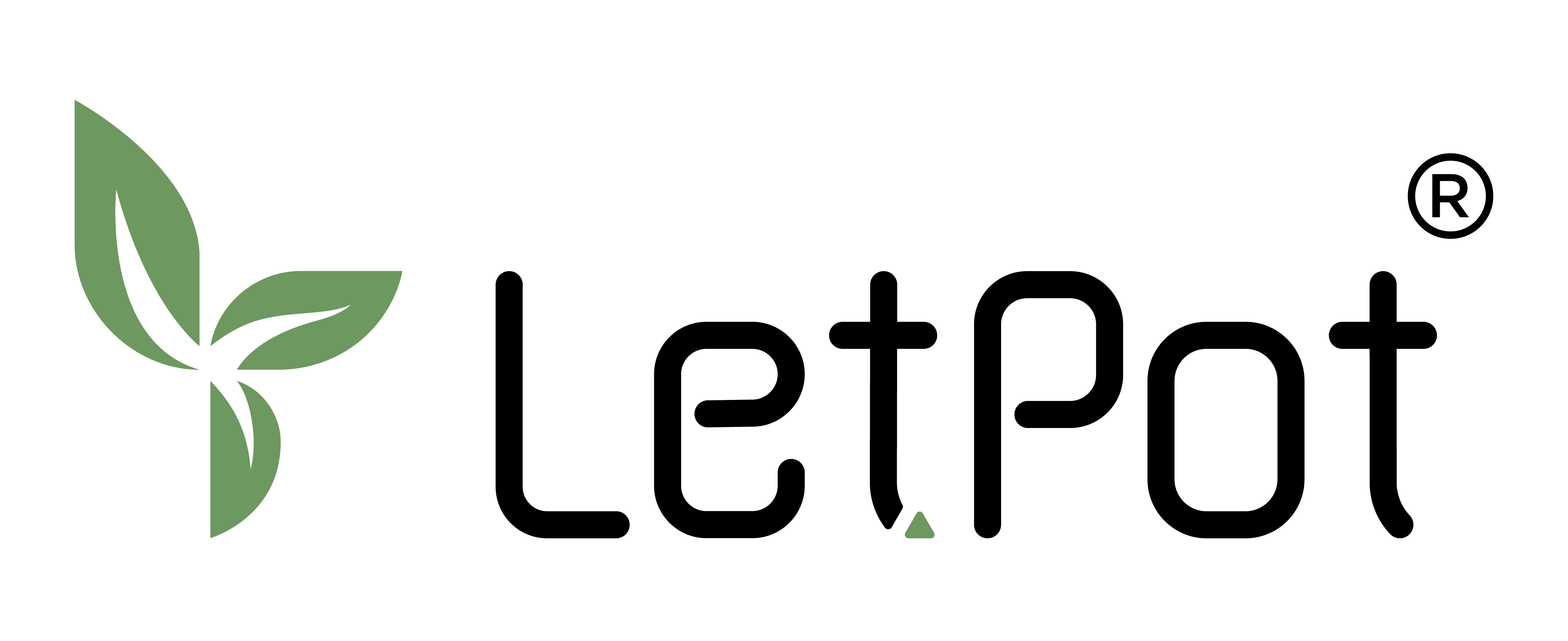

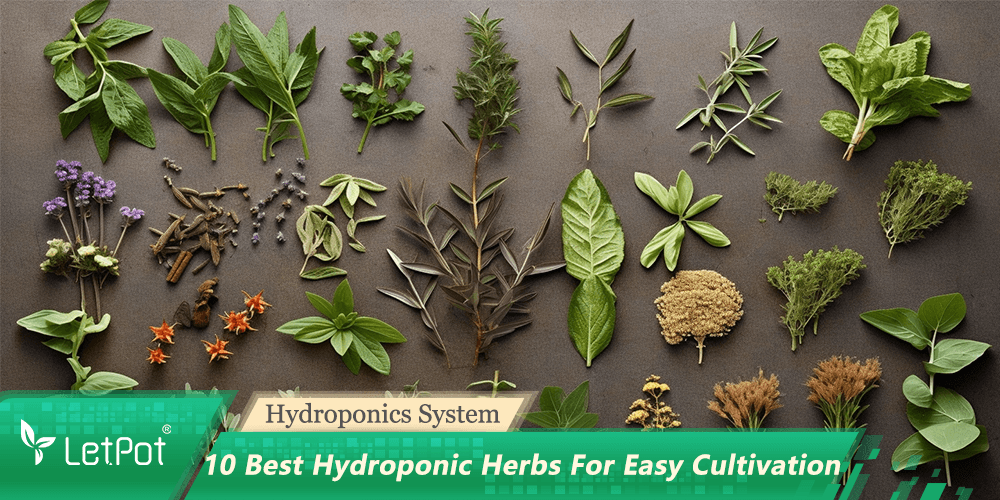




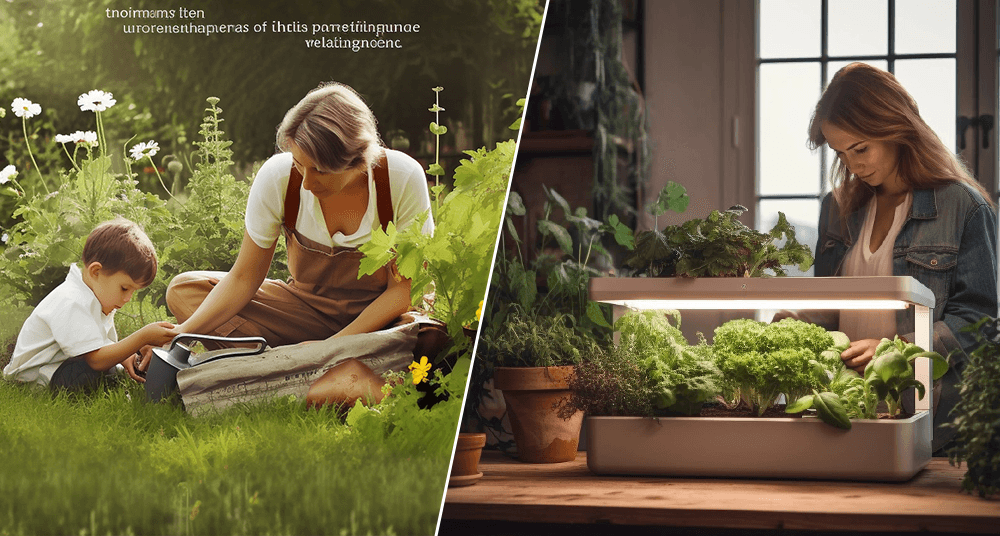
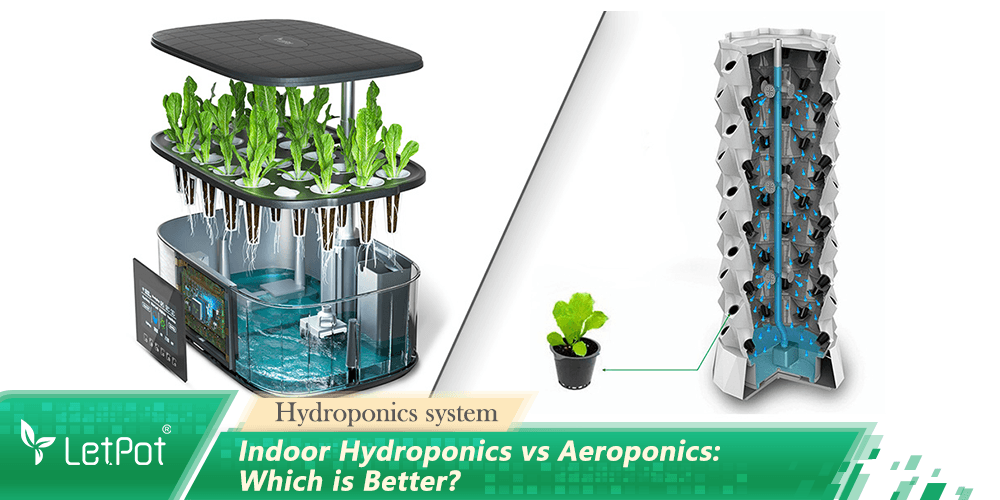
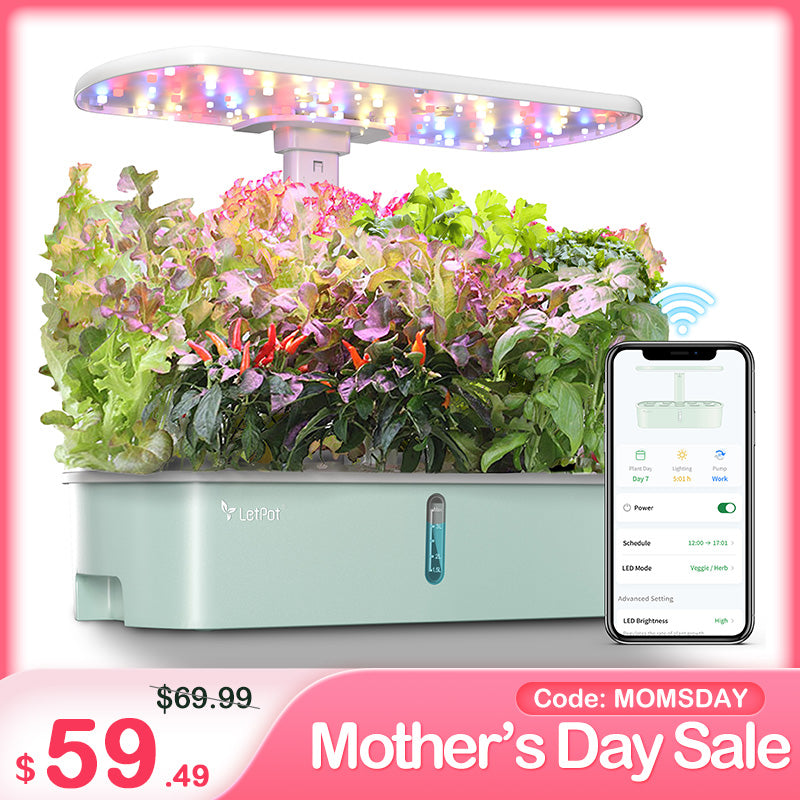

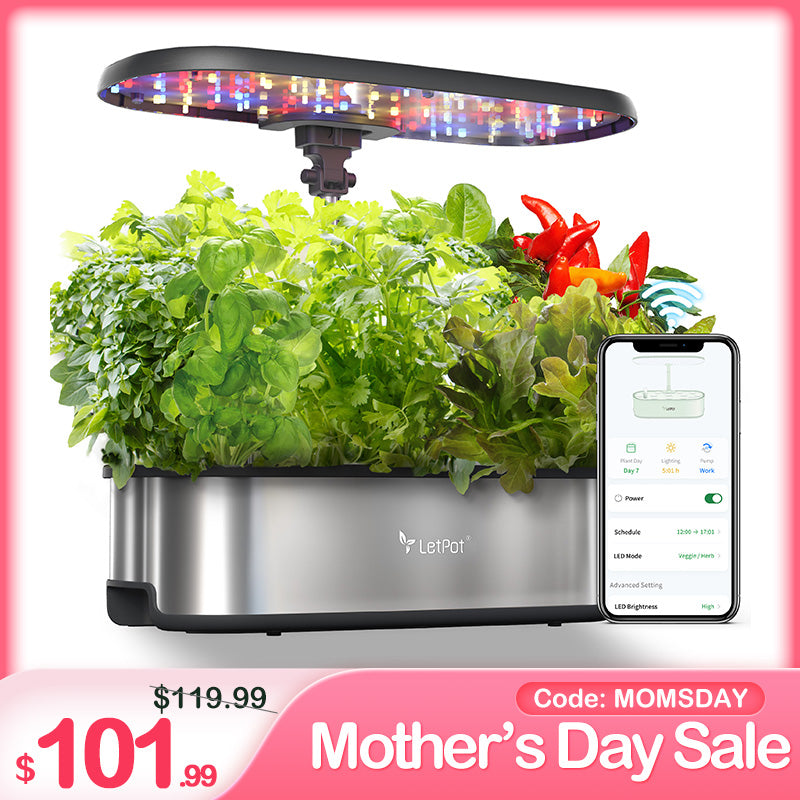

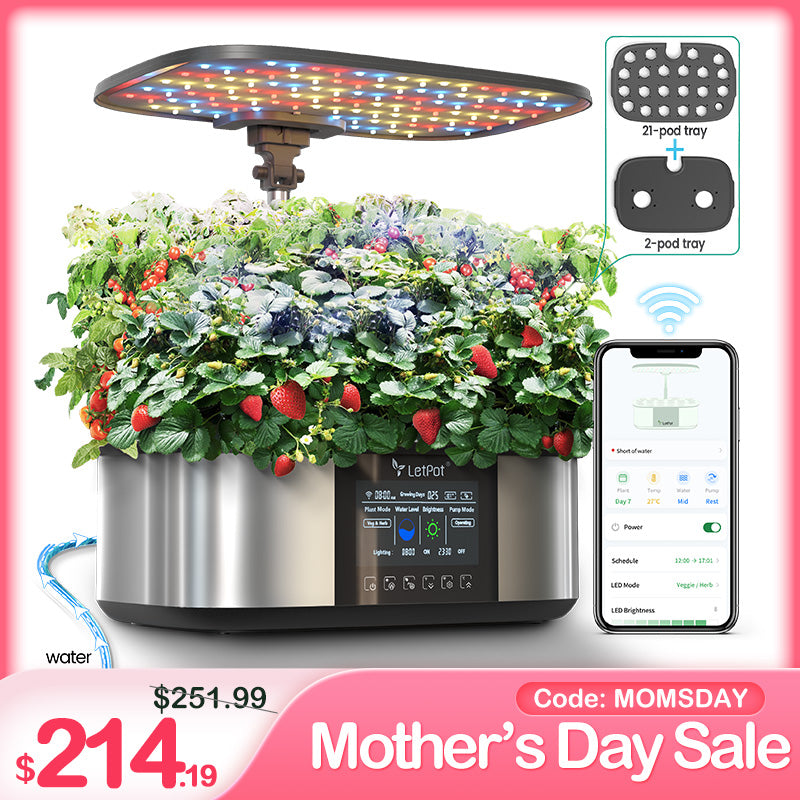



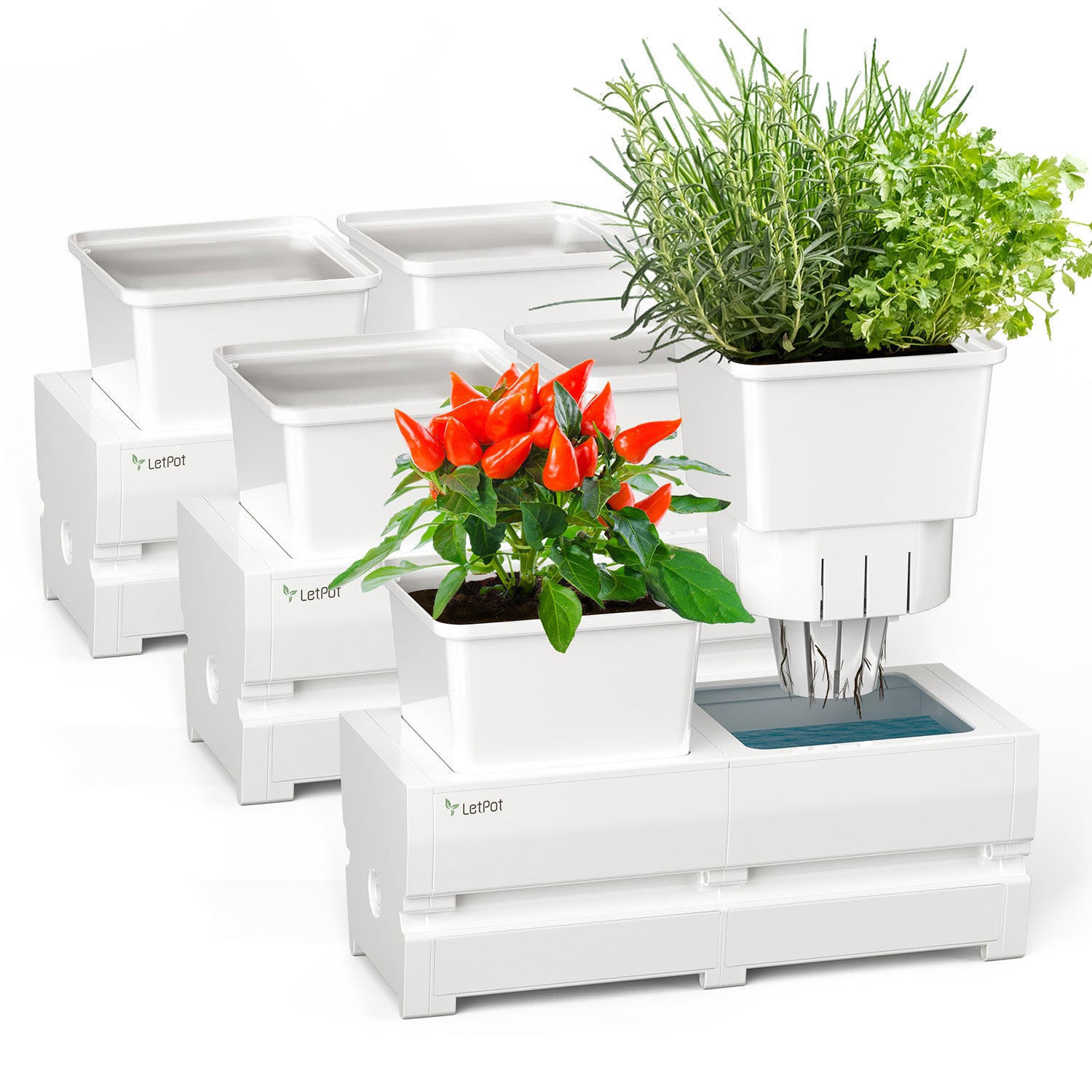



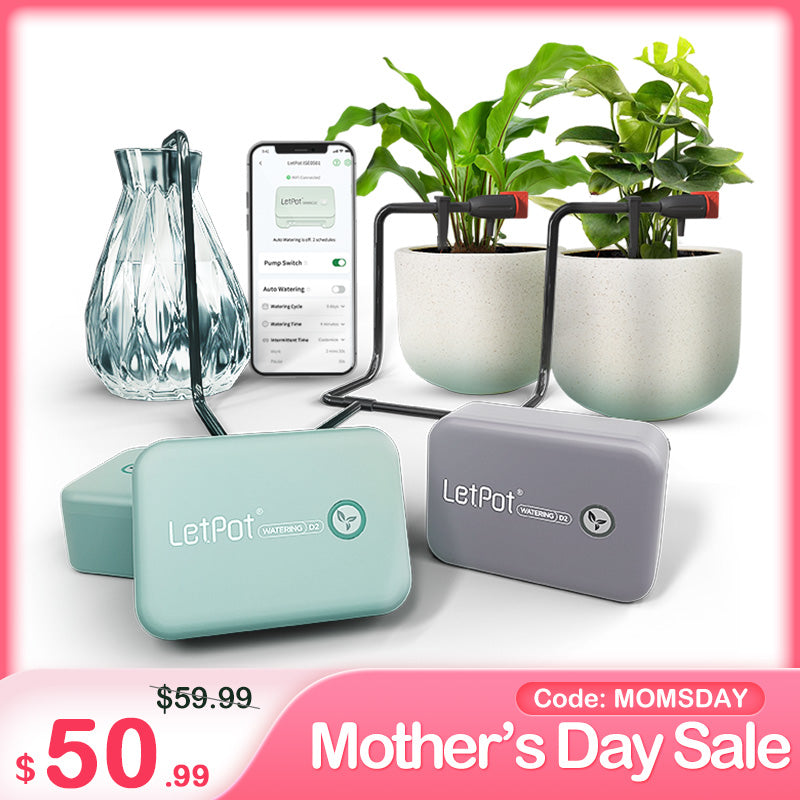



Leave a comment
All comments are moderated before being published.
This site is protected by hCaptcha and the hCaptcha Privacy Policy and Terms of Service apply.